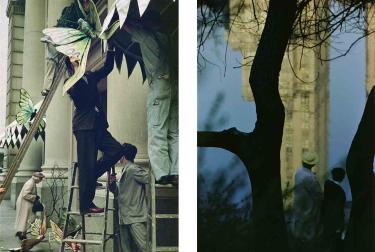Idea
主板中的浩劫 华硕ROG STRIX Z270F GAMING主板评测

Text : Agnès Bardon, UNESCO
Saul Leiter (1923-2013) never sought to conquer the world. In fact, he spent most of his life in an apartment in the East Village in New York. He enjoyed staying at home, painting and drinking coffee. Despite his disdain for the ambitious, he left behind a body of work that makes him one of the major figures in American photography.
Saul Leiter was a lone rider, a man who refused to conform to any category or follow paths mapped out by others. He came to art through painting, a practice he pursued for the rest of his life, and eventually made a name for himself as a fashion photographer, notably for the American magazines Esquire and Harper's Bazaar. He became a pioneer of colour photography at a time when newsrooms and museums swore by black-and-white aesthetics only, considering colour as vulgar and reserved for advertising.
The pictures he took in his neighbourhood and on his travels, in cities such as Paris, do not follow classic street photography style. A sense of elusion pervades here. His audacious framing creates disorienting compositions of ordinary scenes. A pond in Central Park and shop displays become the pretext for a play of mirrors that hints at an intriguing presence beyond what is visible. The faces are captured disappearing into shadows, blurred by mist or seized from such a distance that the essential is never forgotten: the pulsating city around them.
Saul Leiter didn’t want to conquer the world. Nevertheless, he is celebrated today as the master of colour, exhibited at many great institutions and cited as a main influence by a number of photographers and filmmakers. A kind of legacy that would undoubtedly have made him want to just go home, to paint and drink coffee.











